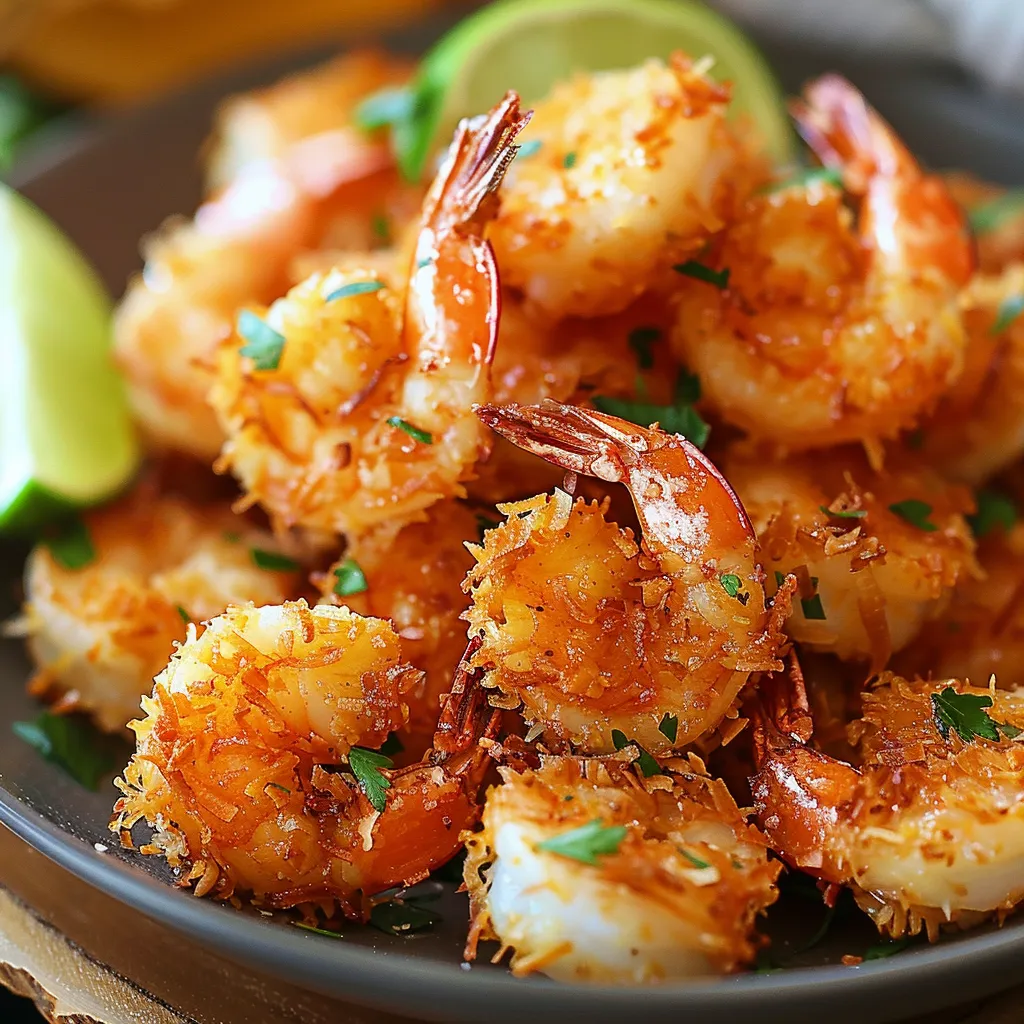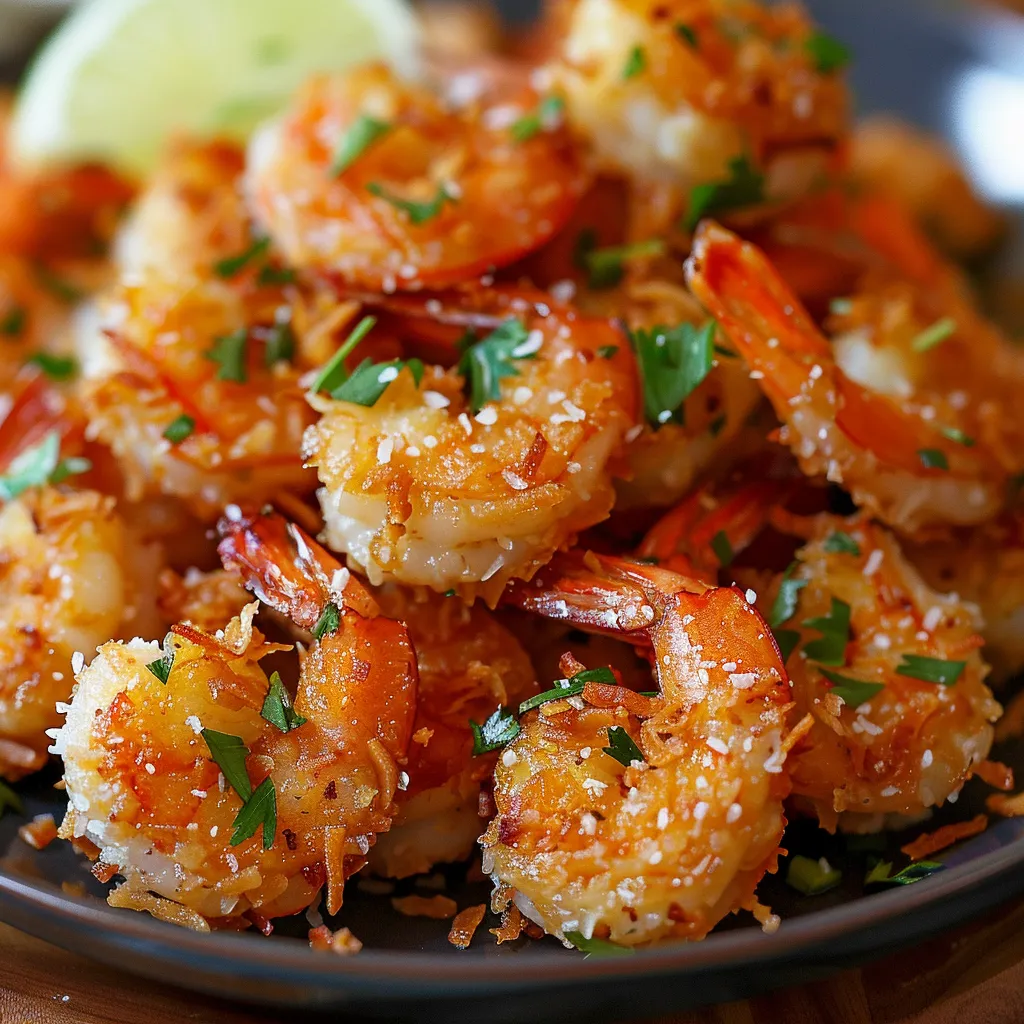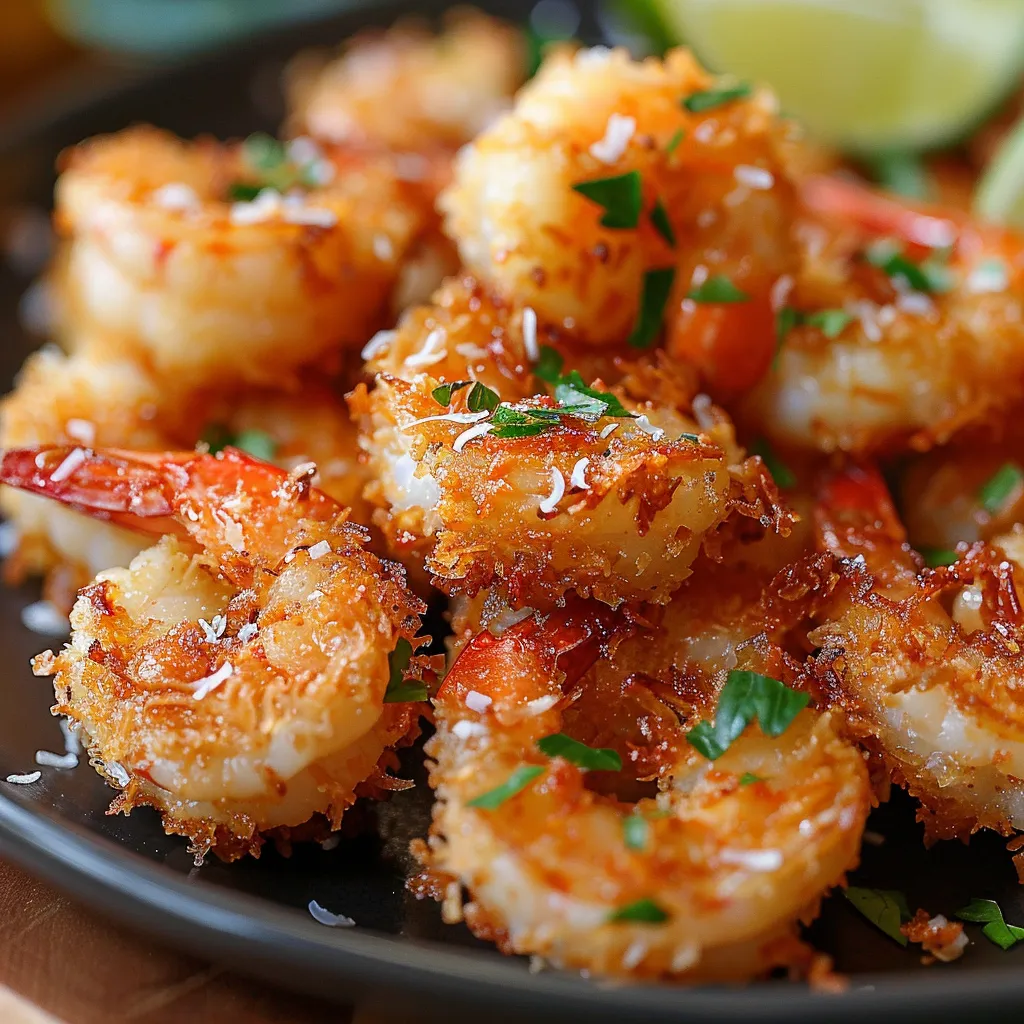 Pin it
Pin it
Crispy coconut shrimp is the ultimate crowd-pleaser and transforms even the simplest weeknight dinner into something special. The combination of sweet coconut and crunchy panko on succulent shrimp brings restaurant flair right into your home kitchen while being surprisingly easy to master.
The first time I served these shrimp at a backyard barbecue, not a single one was left by the end of the night—now my friends always ask when I'll make them again.
Ingredients
- Large shrimp: Peeled and deveined ensures you get hearty bites and an easy eating experience choose firm and fresh if possible
- All-purpose flour: Helps the coating adhere to the shrimp look for unbleached variety for best flavor
- Large eggs: Act as the binder for the breading use farm fresh eggs if available
- Shredded coconut: Unsweetened brings classic tropical flavor choose finely shredded for better cling
- Panko breadcrumbs: Create a super crisp crunch look for Japanese-style for best texture
- Paprika: Adds subtle warmth and color try smoked if you want depth
- Garlic powder: Enhances savory notes go for a fresh jar for maximum aroma
- Salt: Balances flavors fine sea salt works best in coatings
- Black pepper: Provides gentle heat grind fresh for extra pungency
- Cayenne pepper: Optional for heat use if you like a kick or omit for mild shrimp
- Oil for frying: Coconut oil adds sweetness but vegetable oil works well too choose a neutral oil to let flavors shine
- Lime wedges for serving: Brighten each bite select limes that feel heavy for their size
Step-by-Step Instructions
- Prep the Shrimp:
- Dry the peeled and deveined shrimp thoroughly with paper towels so the coating will stick well and you avoid splatters in the hot oil
- Set Up Breading Station:
- Line up three bowls one for flour one for beaten eggs and one for a thorough mixture of shredded coconut panko breadcrumbs paprika garlic powder salt black pepper and cayenne Press the coconut and panko together to mix evenly
- Coat the Shrimp:
- Dredge each shrimp first in the flour shaking off any extra so the layer is thin Then dip generously in the beaten eggs letting excess drip off Finally toss in the coconut panko mixture using your hands to press crumbs firmly so they adhere
- Heat Oil:
- Pour one to two inches of oil in a deep skillet or large frying pan Warm it to 350 degrees Fahrenheit use a thermometer for accuracy This temp gives the shrimp their signature golden crust
- Fry in Batches:
- Carefully add the coated shrimp in small groups Avoid crowding which drops the oil temperature and makes shrimp greasy Fry each batch for two to three minutes per side turning just once Be patient and watch for that perfect deep golden brown
- Drain and Serve:
- Lift cooked shrimp out with a slotted spoon and set on a paper towel lined plate to remove excess oil Serve immediately while they are hot and crispy with lime wedges on the side for a zesty finish
 Pin it
Pin it
I always reach for unsweetened coconut flakes because they toast so beautifully and never overpower the shrimp with sugar. I will never forget my sister sneaking the golden crumbs from the plate while pretending to help with cleanup—these shrimp do not last long on any table.
Storage Tips
Crispy coconut shrimp are best fresh from the pan but leftovers can keep in the fridge for up to two days. For the crispiest texture, spread them out on a baking sheet and reheat in a hot oven rather than the microwave—that way the coating stays crunchy instead of turning soggy. If you want to freeze extras, lay fried shrimp in a single layer on a tray to freeze solid before bagging, then crisp up straight from the freezer without thawing.
Ingredient Substitutions
You can swap panko for traditional breadcrumbs if that is what you have though the crunch will not be quite as bold. Try gluten-free flour and crumbs for an allergy-friendly version. If shredded coconut is hard to find in your area, try flaked coconut chopped finer in a food processor so it sticks more evenly to your shrimp.
Serving Suggestions
These shrimp shine as party snacks with a sweet chili dipping sauce or serve over coconut rice for an easy dinner. Add them as crunchy toppers to an Asian-inspired salad, or tuck inside warm tortillas with a quick slaw for unforgettable seafood tacos. Squeeze extra lime juice over everything for brightness.
Cultural or Historical Notes
Coconut shrimp is a popular appetizer at Caribbean and Floridian restaurants, known for pairing local seafood with the region's abundant coconut palms. The dish reflects the fusion of Asian and island flavors that is so common in tropical cooking. Making it at home brings a vacation vibe to your kitchen, rain or shine.
 Pin it
Pin it
Making coconut shrimp at home brings a taste of the tropics right to your table—once you try these, they may become your most-requested dish.
Frequently Asked Questions
- → What type of shrimp works best for this dish?
Large, peeled, and deveined shrimp are ideal because they offer a juicy texture and hold the coating well during frying.
- → How do I get the coconut and panko coating to stick?
Firmly press the coconut and panko mixture onto the shrimp after dipping in egg. This helps create a thick, even crust.
- → What oil is best for frying?
Coconut oil complements the flavor, but any neutral oil like vegetable oil works well for crisp results.
- → Why does oil temperature matter?
A steady 350°F (175°C) ensures the shrimp become crispy and golden without absorbing excess oil or burning.
- → Can these shrimp be baked instead of fried?
Yes, baking is possible at 425°F (220°C) until golden, though frying delivers the crunchiest texture.
